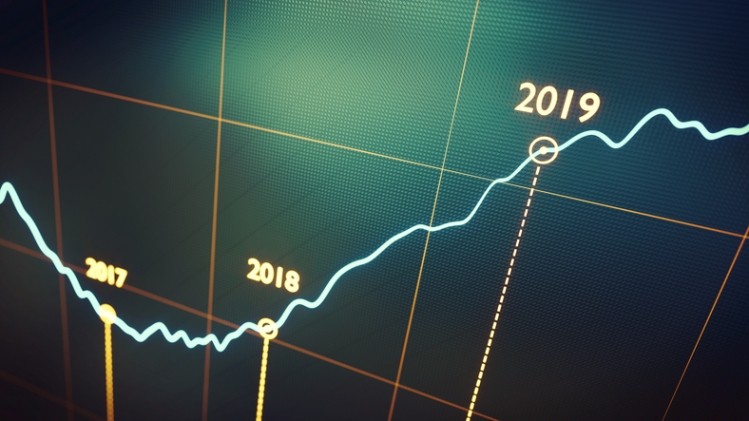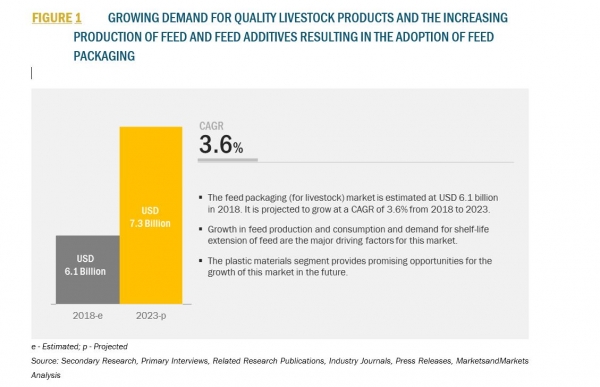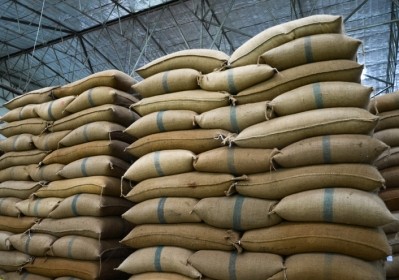Asia-Pacific driving packaged animal feed market

Feed packaging is projected to grow at a compound annual growth rate (CAGR) of 3.6% from 2018 up to 2023, forecast Bhawna Sharma, research analyst, food, beverage, animal feed and agriculture, Markets and Markets.
“It is not huge growth; it is less than 5%.”
Most of that growth will be seen in the pet food packaging sector, packaged livestock feed will be less of a driver, she said.
However, in Asia-Pacific, in large markets such as China and India, demand for packaged livestock feed is set to increase, certainly in the short-term, said Sharma. Such markets have seen a hike in feed production and consumption and an increase in demand for shelf-life extension of feed in recent years.
The Asian region will be fastest growing in respect of packaged livestock feed use over the next five years, but the needs of smallholder farmers in South America and Africa will also help boost that segment.
“Animal husbandry in Asia, for example, tends to be dominated by small scale farmers who have to buy in feed in low volumes; they go for packaged feed in 3-5kg or 10-15kg bags as do not have any space or facilities to store large amounts of feed over a long period of time,” Sharma told us.
Leading suppliers in the feed packaging sector include: LC Packaging (the Netherlands), El Dorado Packaging, Inc (US), NPP Group Limited (Ireland), Plasteuropa Group (UK), NYP Corp (US), ABC Packaging Direct (US), Shenzhen Longma Industrial Co, Limited (China), Amcor Limited (Australia), Mondi Group (Austria), ProAmpac (US), Sonoco Products Company (US), Winpak Ltd., (Canada), NNZ Group (the Netherlands), Constantia Flexible Group (Austria) and Huhtamäki Oyj (Finland).
Polyethylene dominates
Livestock feed packaging comprises only flexible packaging; there is no need for rigid formats. In terms of the materials most widely used, polyethylene has the largest share of the livestock feed packaging sector; the plastic material is used to produce woven bags.
As regards shelf-life extension, polyethylene has distinct advantages over other materials. “It has strength and it prevents spoilage.”
A quarter of a century ago, feed manufacturers used to package their product in the organic raw material, jute. “Today, almost 60-65% of the market of livestock feed packaging on a global level consists of polyethylene,” said Sharma.
Where jute is still relied on to package feeds, polyethylene derived plastic liners are also used to prevent leakage and contamination, she added.
The analyst said increasing concerns regarding health issues in livestock and the rising awareness among consumers about animal health have resulted in the feed industry becoming more concerned about feed preservation.
“Packaging not only decreases the probability of disease contamination and feed spoilage but also expands the shelf-life of the feed without deteriorating its taste and nutritional values. Effective packaging helps in eradicating the global issue of feed and pet food wastage.”
Growth restraints
However, one of the trends likely to restrain growth in the packaged livestock feed sector beyond 2023 is greater farm consolidation in developing markets, as animal husbandry becomes more professional in those countries, large volumes of non-packaged feedstuffs will be used.
Another issue is the environmental impact of plastic packaging – any markets limiting the use of plastic bags on such grounds could hinder further growth in the segment as well, said Sharma.
Last year in Bangladesh, the government moved to widen the reach of jute packaging to include poultry and fish feed despite calls from the Feed Industries Association of Bangladesh not to include feeds under the legislation as it would expose the products to moisture, and depreciate their quality.
In an article last month, MarketsandMarkets also gave us the low down on developments in the global amino acids production sector.









